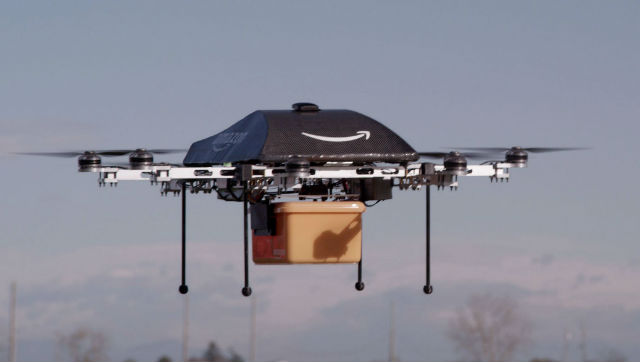Amazon is a step closer to realising its dream of utilising unmanned air vehicles in its delivery service, following the Federal Aviation Administration’s award of an experimental airworthiness certificate to the company to carry out research that would contribute to its envisioned Prime Air offering.
Issued for a UAV design developed by the Amazon Logistics division of the company, the certificate will allow it to carry out research and development and crew training at altitudes of 400ft and below, during daylight hours, and in visual meteorological conditions.
Amazon first detailed its desire to deliver parcels by UAV in December 2013, when chief executive Jeff Bezos announced that the firm would enhance its Prime delivery service with the use of rotary-wing UAVs.
Since then Amazon has fought with the FAA for permission to carry out research into this area in national airspace – even going so far as to write to the FAA in July 2014 to call for an exemption on restrictions, which seemingly has now been granted.

Rex Features
This award follows the FAA's release in February of a proposed set of guidelines by the FAA that would authorise the use of small UAVs for commercial operations in US airspace at up to 500ft during daylight hours – so long as they remain within visual line of sight of operators who have passed an aeronautical awareness test.
However, flights would not be able to be carried out above people, so fully commercial operations of UAVs by companies like Amazon still seem a long way off. Nevertheless, this is a step in the right direction for Amazon, which has been determined to develop this area.
Under the terms of the certificate and in line with the FAA’s experimental airworthiness certificate guidelines, Amazon must report back to the administration with its findings on a monthly basis.
This would include informing the FAA on the number of flights conducted, pilot duty time per flight, unusual hardware and software malfunctions, deviations from air traffic controllers’ instructions and any unintended communications link losses.
The pilot of the UAV must also have a private pilot’s certificate and current medical certification – usually part of manned aviation guidelines.
Source: FlightGlobal.com


























